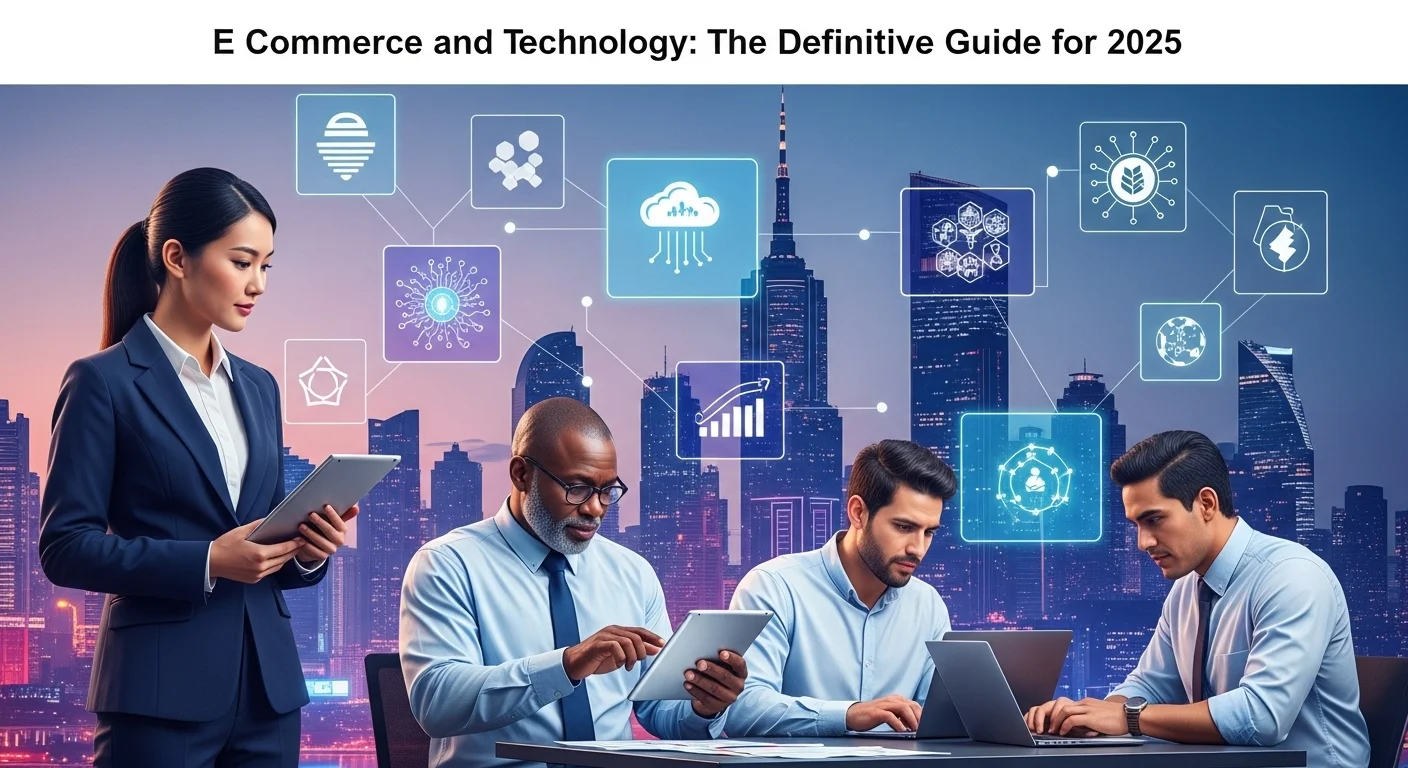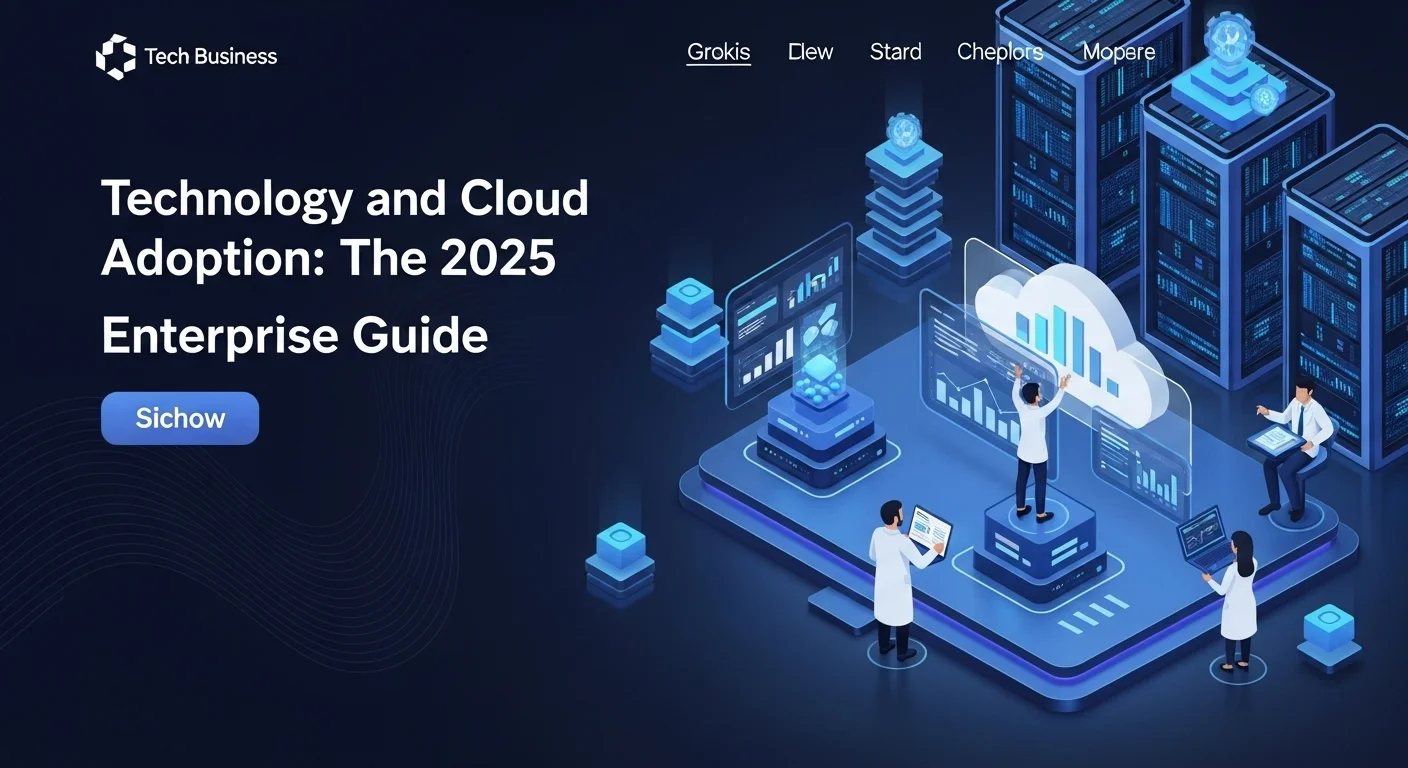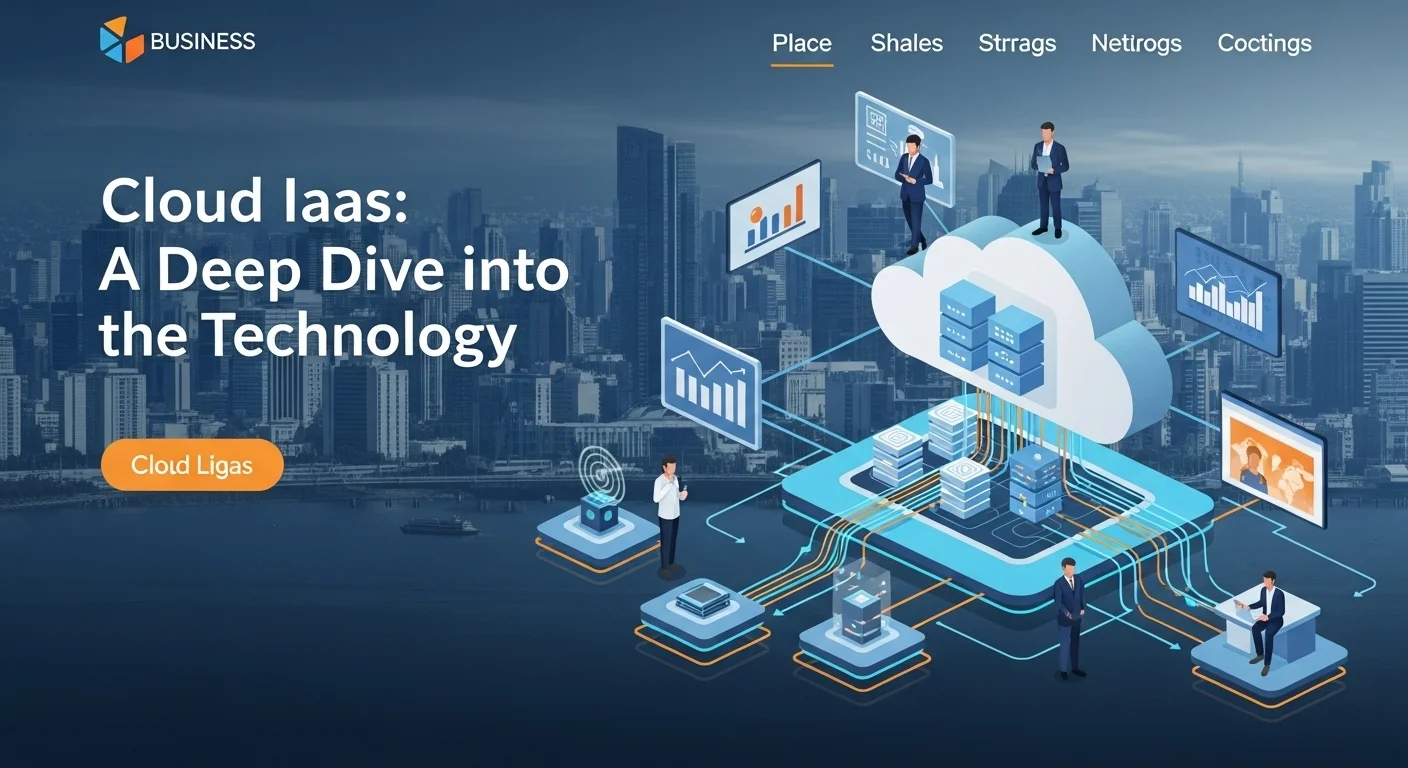Your E-Commerce & Tech Playbook for 2025: From Launch to Lockdown Security

Executive Summary
In my years of consulting, I've seen countless entrepreneurs dive into e-commerce, mesmerized by the promise of global reach and digital success. But there's a crucial intersection many overlook until it's too late: the one where technology meets iron-clad security. This guide is the conversation I wish I could have with every one of them. We'll walk through the foundational tech that brings an online store to life, from the cloud platforms that keep you running during a sales rush to the AI that makes customers feel seen. But more importantly, we'll spend real time on the topic of cybersecurity. I'll share insights on how to protect your digital storefront and your customers' precious data from the constant threat of cyberattacks. This isn't just for the tech wizards; it's for business owners, marketers, and anyone who wants to build a resilient, trustworthy online brand. Consider this your personal roadmap to navigating the tech side of e-commerce and securing your competitive edge for the long haul.
Table of Contents
Table of Contents
What is E-commerce, Really? A Founder's Perspective
E-commerce is more than just a website with a shopping cart; it’s an entire digital ecosystem. Think of it as building a flagship store in the busiest city in the world, except the city is the internet, and your doors are open 24/7 to everyone, everywhere. It's the whole process: a customer discovering your product on their phone, making a purchase, and the seamless transfer of money and data that makes it all happen. Its importance in the world of technology is massive because e-commerce has consistently been the driving force behind so many innovations. I remember the early days, back in the late 90s, when just getting a secure payment to go through felt like magic. Now, that 'magic' is a complex, high-speed orchestra of technology. We've gone from dial-up and basic HTML sites to a world where your store can live on the cloud, scale instantly for a flash sale, and offer a deeply personal experience to every visitor. This evolution didn't just happen; it was built on layers upon layers of technological breakthroughs.
The Technology Powering Your Online Store
Behind every great online shopping experience, there’s a sophisticated technology stack. On the 'front-end'—what your customer sees—you have the visual elements built with languages like HTML, CSS, and JavaScript frameworks (like React) that create those slick, responsive interfaces we all love. The 'back-end' is the engine room. It’s powered by languages like Python or PHP and databases like MySQL, managing everything from your product inventory to customer orders. All of this usually lives on a cloud platform—think Amazon Web Services (AWS) or Google Cloud—which gives you the power and flexibility to grow without having to build your own server farm. But let's be honest, the single most critical piece of this entire puzzle is security. The moment you ask a customer for their personal and financial information, you've entered a pact of trust. Breaking that trust isn't just bad for business; it can be the end of it.
Why Security is Your Most Important Feature
This brings us to the heart of the matter: cybersecurity in the e-commerce world. It's not a feature you add on; it's the foundation you build on. Every transaction, every customer account, every piece of data is a potential target. A cyberattack isn't some abstract threat; it can lead to devastating financial loss and shatter the reputation you've worked so hard to build. Securing your network is one of the first lines of defense. This means protecting the digital pathways between your customer, your store, and your payment processor. We use things like SSL/TLS encryption, which creates a secure, private tunnel for data to travel through—it's why you see that little padlock icon in your browser. We also set up firewalls and intrusion detection systems to act as digital security guards, watching traffic and blocking anything that looks suspicious. The challenges of keeping e-commerce safe have actually spurred incredible innovation. The need to spot fake orders has given us brilliant AI algorithms that can detect fraud in milliseconds. The need to prove a user is who they say they are has made things like multi-factor authentication (MFA) standard practice. In many ways, the fight to secure online retail has made the entire internet safer for everyone.

Choosing Your E-commerce Platform: SaaS vs. Open-Source
When you decide to build, your first big choice is the platform. I've seen clients get paralyzed here, but it breaks down pretty simply. You've got three main paths. First, there are SaaS (Software as a Service) platforms like Shopify or BigCommerce. Think of these as leasing a fully-equipped storefront in a high-tech mall. They handle hosting, security, and updates for a monthly fee. It's the fastest way to get up and running, and perfect for those who aren't super technical. Second, you have open-source options like Magento or WooCommerce for WordPress. This is like buying your own plot of land and building from scratch. You get total freedom and flexibility, but you're also responsible for everything—construction, maintenance, and especially security. It requires more technical skill but offers limitless potential. Finally, there's a newer approach called 'headless commerce'. This decouples your front-end 'storefront' from your back-end 'warehouse', letting you create truly unique customer experiences across websites, mobile apps, or even smart mirrors. It's powerful but complex. No matter which you choose, they all rely on the cloud to give you the scalability you need for big sales events like Black Friday.
Leveraging Smart Tech: AI, Machine Learning, and You
This is where things get really exciting. Artificial Intelligence (AI) and Machine Learning (ML) are no longer sci-fi concepts; they are practical tools changing the game. I've seen AI-driven recommendation engines increase average order values by 15-20% simply by showing customers products they'll genuinely love. AI can also power chatbots for 24/7 support and even adjust your pricing on the fly based on market demand. But its most vital role, in my opinion, is in security. The best fraud detection systems today are powered by ML. They can analyze thousands of signals in a single transaction—location, time of day, purchase amount, past behavior—to spot a potential cyberattack and stop it before your money is gone. This proactive defense is a game-changer.
The Non-Negotiable: Secure Payments and PCI DSS
Let's talk about the moment of truth: the payment. You absolutely must use a secure, reputable payment gateway like Stripe, PayPal, or Adyen. These services are specialists in securely handling credit card data. They are also compliant with something called the Payment Card Industry Data Security Standard (PCI DSS). This is a set of strict security rules that any business handling card payments must follow. Think of it as the health and safety code for financial data. Being PCI compliant isn't optional; it’s a mandatory part of earning your customers' trust and protecting your business from massive fines and liability. This is a core pillar of a sound cybersecurity strategy, as payment systems are always a top target for criminals.

Actionable Tips for a Winning User Experience
A brilliant, secure backend means nothing if the customer-facing experience is clumsy. Here are some battle-tested strategies to make your store shine. First, adopt a 'mobile-first' mindset. Most of your customers are on their phones, so your site must be flawless on a small screen. Better yet, look into Progressive Web Apps (PWAs), which blend the best of websites and mobile apps for a super-fast, engaging experience. Second, obsession with speed. Use Google's Core Web Vitals as your report card. Compress your images, use a Content Delivery Network (CDN) to serve content from a location near your customer, and trim any slow-loading code. A one-second delay can literally cost you sales. Finally, use A/B testing to let your customers tell you what works. Test different headlines, button colors, and layouts to see what actually leads to more sales. It’s not about guessing; it’s about making data-driven decisions.
Fortifying Your Digital Fortress: Advanced Security Tactics
Ready to level up your security? Start by implementing multi-factor authentication (MFA) everywhere—for customer logins and especially for your own admin accounts. It's one of the single most effective ways to stop account takeovers. Next, invest in a Web Application Firewall (WAF). A WAF acts as a shield for your website, filtering out malicious traffic and protecting you from common attacks like SQL injection. I also insist my clients get regular security audits and penetration tests from a trusted third party. It’s like hiring a team of ethical hackers to find your weak spots before the real criminals do. It's an investment that can save you from a catastrophe down the road.
The Human Element: Your First Line of Defense
You can have the best technology in the world, but your biggest vulnerability is often human. I've seen multi-million dollar companies breached because an employee clicked a link in a convincing phishing email. This is why ongoing employee training is not just a checkbox item; it's a critical security control. Teach your team to be skeptical, to spot suspicious requests, and to follow strict security protocols. When your technology and your people are working together, you create a culture of security. For anyone serious about this, I always recommend the OWASP Top 10. It's a list of the most critical web application security risks, updated by experts. Understanding and defending against these threats is fundamental to building a truly secure e-commerce business that's ready for whatever comes next.
Expert Reviews & Testimonials
Sarah Johnson, Business Owner ⭐⭐⭐⭐
This was so much more helpful than other guides. The advice on choosing a platform and the security tips felt like they were written for me, not a programmer. Feeling more confident now!
Mike Chen, IT Consultant ⭐⭐⭐⭐⭐
As an IT guy, I appreciate the directness. The author cuts through the jargon and focuses on what actually matters, especially the emphasis on the OWASP Top 10 and the human element of security. Great read.
Emma Davis, Tech Student ⭐⭐⭐⭐⭐
Excellent article! The personal stories made the complex tech concepts much easier to understand. The Table of Contents was super helpful for navigating. Saving this for future reference.



